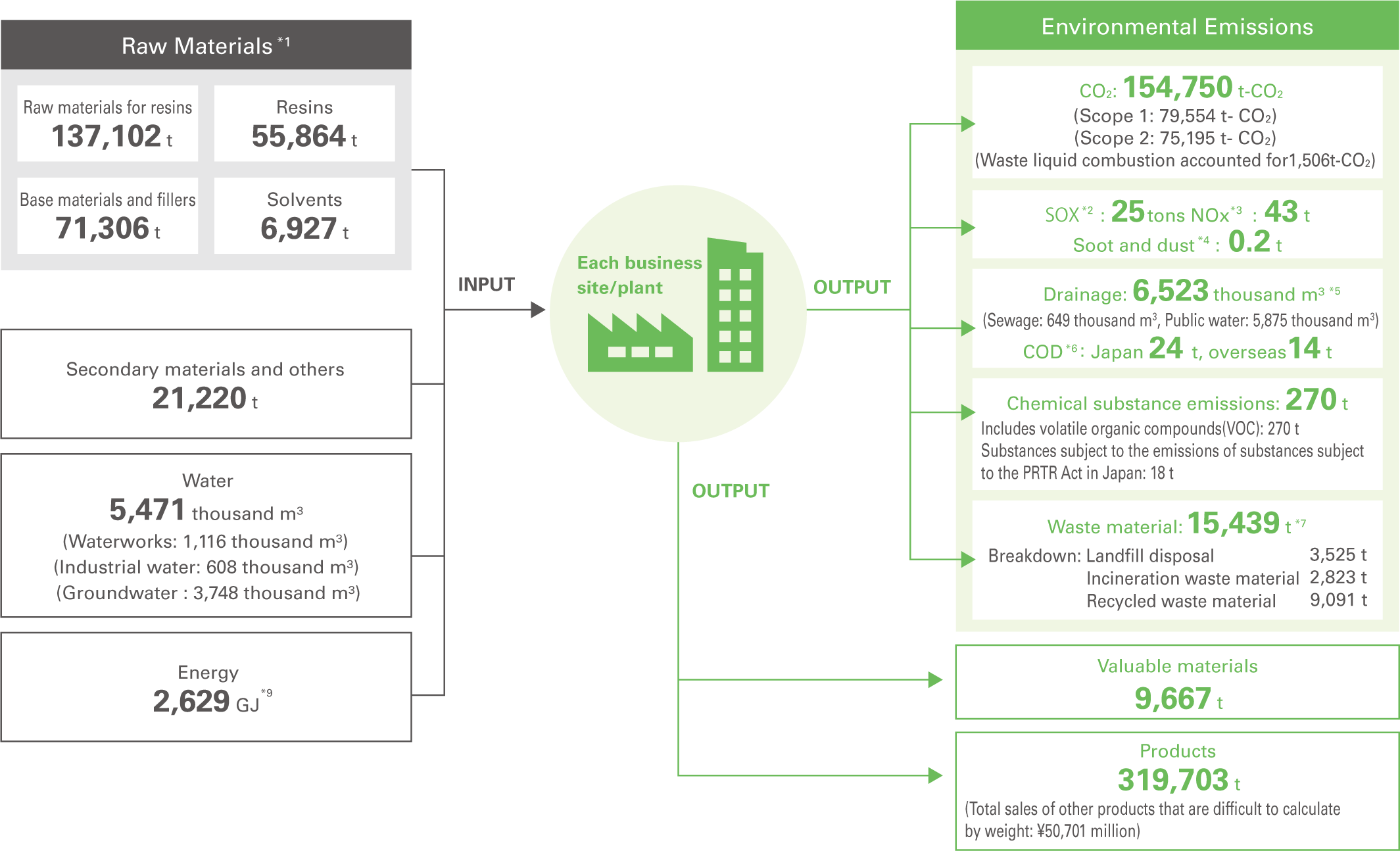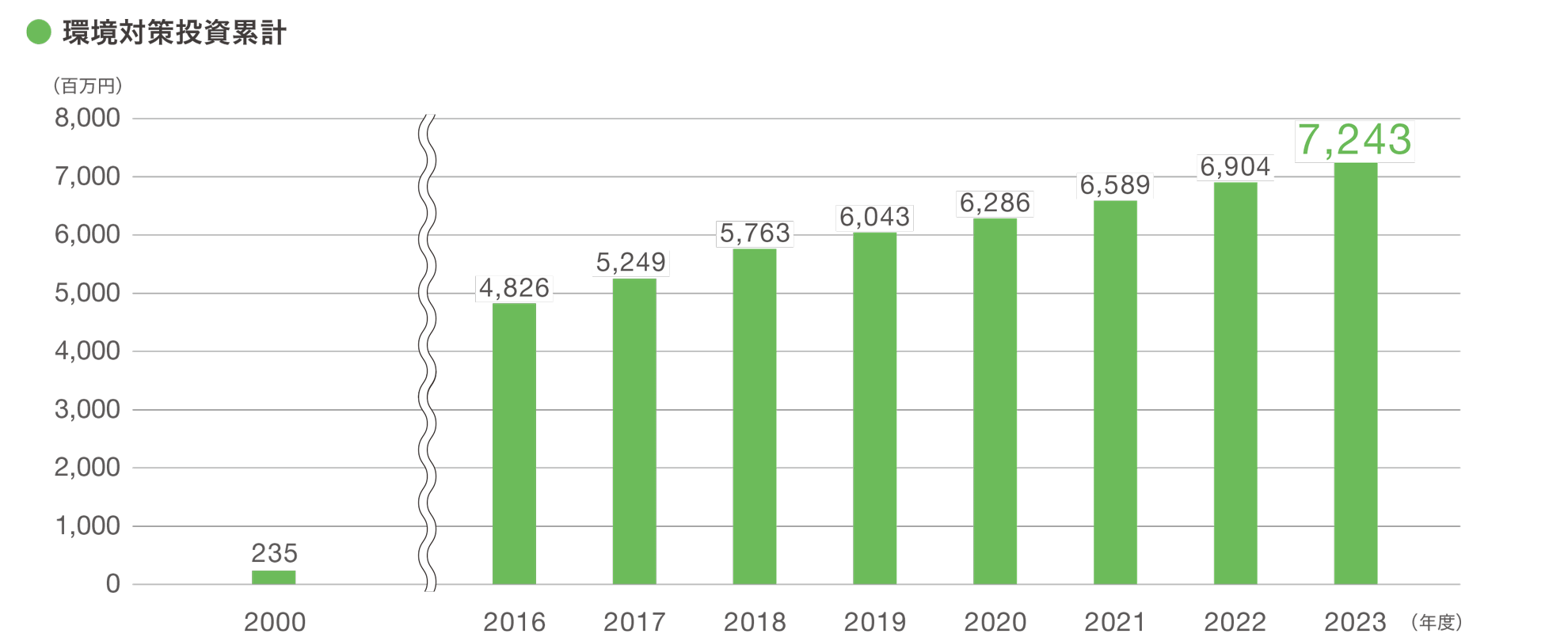The figure below shows inputs, including raw materials and energy, and outputs that are products and emissions released into the environment.
The Group is working to minimize its impact on the environment by reducing waste disposed to the environment and reducing the use of raw materials, energy, and water from the perspective of resource-saving. We are also promoting CO2 emissions reduction to achieve carbon neutrality.
Through our ongoing activities, we will contribute to measures against global warming and other climate changes by implementing initiatives that reduce outputs that affect the environment, with respect to increases in input.

- *1: The ratio of renewable raw materials to total raw materials used is about 2.7% at the current point in time, but we will make efforts from the development stage onward in order to increase the ratio of renewable raw materials use.
- *2, 3, 4, and 6: See the Glossary. SOx, NOx, and soot and dust are calculated using the company's own formula based on exhaust gas readings and fuel usage amount, among other variables. Since methods of calculating emissions of soot and dust differ among countries, this figure is compiled solely for business sites in Japan at present. COD is calculated based on the measured concentration and drainage volume. Data on overseas COD covers sites that measure COD within drainage. Data for overseas sites are stated separately because the types of oxidant (potassium dichromate is mainly used overseas) used for measurement differ from those used in Japan.
- *5: Drainage volume is determined by calculating drainage into sewages based on the breakdown of total usage. Drainage into public water areas is calculated using readings from flow meters installed at business sites; while water usage volume is used for business sites without flow meters.
- *7: The volume of hazardous waste found in our waste came to 5,972 t and non-hazardous waste was 9,467 t. Hazardous waste is based on the categorization of each country and is not subject to assurance.
- *8: VOC (Volatile Organic Compounds)
- *9: Energy consumption has been calculated and disclosed based on the Act on the Rational Use of Energy, but has been changed from the conventional crude oil equivalent (kL) to thermal unit (GJ) from the current period. In addition, thermal conversion coefficient of electric consumption has been revised to 3.6GJ/thousand kWh.
- * The volume of products shipped and value of products sold are not subject to assurance.

Topics More
- 2025/11/28 Sustainability Integrated Report 2025 of Sumitomo Bakelite Co., Ltd. has been issued.
- 2025/05/09 Sustainability SBT Certification granted by the SBTi (Science Based Targets initiative)
- 2025/04/14 Sustainability Launch of “Project Team to Prepare for Mass Production of Functional Membranes for Hydrogen Production”
- 2025/02/25 Sustainability Sumitomo Bakelite Co., Ltd. Receives Gold Medal in EcoVadis Sustainability Assessment
- 2024/12/06 Sustainability Integrated Report 2024 of Sumitomo Bakelite Co., Ltd. has been issued.
Email us about Sustainability
Inquiry
